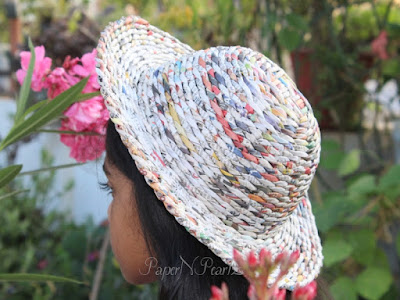With the wedding season upon us, my very creative sister-in-law was asked to make some flower baskets and a bridal bouquet for an upcoming wedding. She handled the bouquet while I worked on the flower basket. The newspaper one was the first trial. But once I finished it, I came to know that the flower girls were gonna be really small kids and the basket would be too big for them. So I tried another basket, this time using the wedding colours of pink, cream and white.
Here's a closer view of the second basket. It was pretty rudimentary, since it was, after all, a trial. My main worry was the proportion of the basket to the handle and how well the colour theme worked out. Satin pink ribbons, grosgrain pink polka dot ribbons and gold ribbons ensured that the basket turned out very well. So now, all that is left is making 6 flower baskets for 6 little girls.
Finally, a close-up of the bigger basket. The gaps in the basket would be where we would thread the ribbon. The challenge for the flower basket was that there was no form or shape that I could use to help make the basket. So for making the wide end of the basket, I had only pictures to go by. Thankfully at the end, I got the hang of it. It is not really symmetrical, I know, but at least I know how to do it and hopefully with my experience, I will end up making symmetrical flower baskets 😃
























